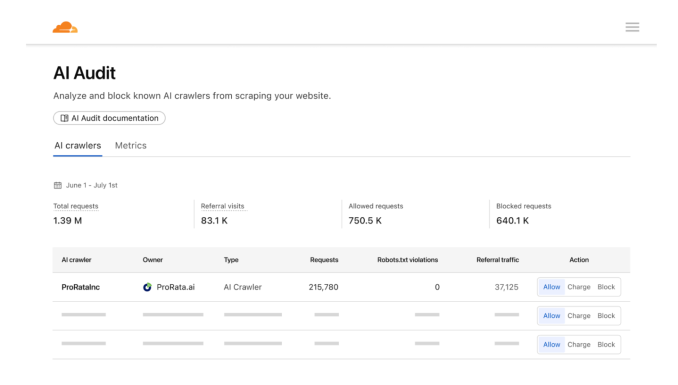In a groundbreaking move, a prominent cloud infrastructure provider has unveiled a marketplace that transforms the dynamics between website owners and artificial intelligence companies. This innovative platform aims to empower publishers by granting them enhanced control over their content and the ability to monetize interactions with AI bots.
Over the past year, the company has rolled out various tools designed to help publishers combat the surge of AI crawlers. These tools include a straightforward solution to block unwanted AI bots and a comprehensive dashboard that allows website owners to monitor AI crawler activity on their sites. In a recent interview, the CEO highlighted that these initiatives were paving the way for a new marketplace where publishers could share their content with AI firms and receive compensation in return.
The newly launched marketplace, named Pay per Crawl, is currently in a private beta phase. This experimental platform allows website owners to set specific rates for AI crawlers to access their content, essentially creating a micropayment system for each crawl. Alternatively, they can opt to allow free access or completely block AI crawlers. The company asserts that its tools will enable website owners to discern the purposes behind AI crawlers’ activities, whether for training data, AI search results, or other uses.

Website owners participating in the Pay per Crawl initiative will have a clear view of how their content is being utilized by AI bots, providing them with valuable insights into the evolving landscape of digital content consumption.
This marketplace represents a significant opportunity for publishers to establish a sustainable business model in the age of AI, positioning the company as a central player in this new ecosystem. The launch comes at a critical time when news publishers are grappling with challenges related to audience engagement, particularly as traditional traffic sources like search engines decline and AI-driven platforms gain traction.
As the industry navigates these changes, the future of news publishing remains uncertain. Some publishers have taken legal action against tech companies for using their content without permission, while others have entered licensing agreements to ensure their material is included in AI training datasets and chatbot responses.
However, these licensing deals have primarily benefited larger publishers, leaving many smaller entities without viable revenue streams. The new marketplace aims to democratize this process, allowing all publishers to set their own pricing and terms for content access.
In addition to the marketplace, the company has announced that new websites created on its platform will automatically block AI crawlers by default. This shift empowers site owners to control which AI bots can access their content, aligning with the company’s vision of a permission-based crawling approach.
Many major publishers have already partnered with the company to support this initiative, recognizing the need for a more controlled and equitable environment for content sharing in the digital age.
The traditional business model that many publishers have relied on for years is becoming increasingly unstable. Historically, publishers allowed search engines to crawl their sites in exchange for traffic, which translated into advertising revenue. However, recent data suggests that the balance of this relationship may be shifting unfavorably for publishers in the AI era.
While some websites report significant traffic from AI tools, this trend is not universal. Recent findings indicate that AI crawlers are scraping content at a much higher rate than traditional search engines, raising concerns about the sustainability of this model for publishers.
As AI technology continues to evolve, the implications for publishers are profound. The company envisions a future where AI agents could operate programmatically at the network edge, potentially revolutionizing how content is accessed and monetized.
To engage with this experimental marketplace, both AI companies and publishers must establish accounts with the company. Within their accounts, they can negotiate rates for content access, with the company facilitating transactions and distributing earnings to publishers.
While there are currently no plans to incorporate cryptocurrency into the Pay per Crawl model, the concept has sparked discussions about the potential for digital currency in content monetization.
This marketplace represents a bold vision for the future of content monetization, but its success hinges on widespread participation from both publishers and AI companies. As the landscape continues to evolve, the company is well-positioned to lead the charge in creating a more equitable marketplace for digital content.
